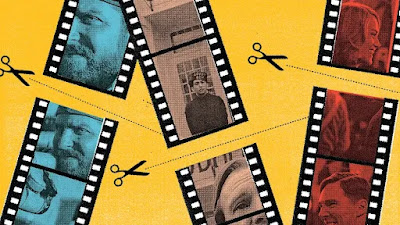Tips to write a Screenplay

Screenplays were once typed on manual typewriters, and to this day their formatting is that simple. Screenplays are printed in 12-point Courier on US Letter paper.
Writing a screenplay can be a challenging task, but there are a few tips that can help make the process easier and more effective:
Start with a strong premise :
A good screenplay should have a unique and compelling premise that grabs the audience's attention and sets the story in motion. Take for example "The Shawshank Redemption", the story follows the story of a man named Andy who is falsely convicted of murder and sent to Shawshank prison. The premise is intriguing and sets the stage for the story to unfold.
Develop well-rounded characters :
A good screenplay should have well-developed characters that the audience can relate to and care about. Take for example "The Godfather", the characters are complex and have many layers, with their own motivations and desires that drive the story.
Create a strong narrative structure :
A good screenplay should have a clear and logical narrative structure that guides the audience through the story. Take for example "The Silence of the Lambs", the story follows a clear narrative structure with a clear beginning, middle, and end.
Use visual storytelling :
A screenplay is a blueprint for a visual medium, so it's important to use visual storytelling techniques to bring the story to life. Take for example "Jaws", the use of visual storytelling is crucial in creating the suspense and tension that makes the film so memorable.
The show, don't tell :
A good screenplay should show the audience what's happening rather than telling them. Take for example "The Artist" the story is told mostly through visual means, with minimal dialogue and exposition, which makes the film more engaging and impactful.
Write visually :
A screenplay is a visual medium, so it's important to write in a way that evokes images in the reader's mind. Take for example "Star Wars", the script is written in a way that makes it easy to visualize the action and the world of the story.
Write with a specific genre in mind :
Knowing the conventions and expectations of the genre you're writing in can help guide your storytelling choices and make your script more appealing to potential buyers. Take for example "Breathless" which is a French New Wave film and follows the conventions.
A screenplay is a written document that contains the elements that are necessary to tell a story visually through a film or a television show. The main elements of a screenplay include:
*Scene Heading
*Action
*Character
*Parenthetical
*Dialogue
*Transition
Scene Heading
This element is also known as a "Slugline" and it describes the location and time of day of the scene. For example, in the film "The Shawshank Redemption" a scene heading might read "EXT. SHAWSHANK PRISON - DAY"
Action
This element describes the visual elements of the scene, such as the character's actions, the setting, and any other relevant details. For example, in the film "The Godfather" the action might describe the characters' movements and dialogue as they discuss the family's business.
Character
This element introduces the characters in the scene, by writing their name in all capital letters before their dialogue. For example, in the film "The Silence of the Lambs" a character's name might read "HANNIBAL LECTER"
Dialogue
This element is the spoken words of the characters in the scene, and it's written in the form of a character name, followed by a colon and the words they speak. For example, in the film "Jaws" a dialogue might read "BRODY: We're going to need a bigger boat"
Parenthetical
This element is used to give the actors and the director additional information about the character's intonation, attitude, or action. For example, in the film "The Artist" a parenthetical might read (in French) to indicate that the character speaks in French.
Transition
This element is used to indicate how one scene should transition into the next, such as CUT TO, FADE TO, DISSOLVE TO, etc. For example, in the film "Star Wars" a transition might read CUT TO: INT. DEATH STAR - DAY
These are the main elements that make up a screenplay, but there are other elements that are used depending on the story and the style of the screenplay. The use of these elements can vary depending on the type of story and the style of the writer, but they all serve the purpose of providing a visual guide to the story and how it should be presented on the screen.
.jpg)

.webp)

Comments
Post a Comment